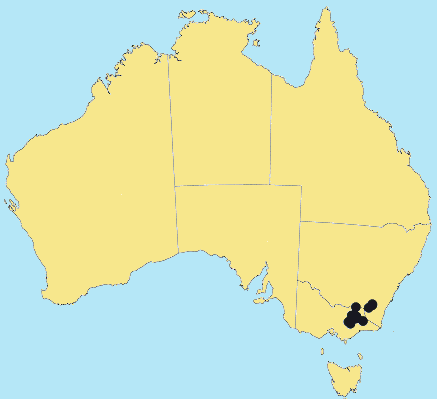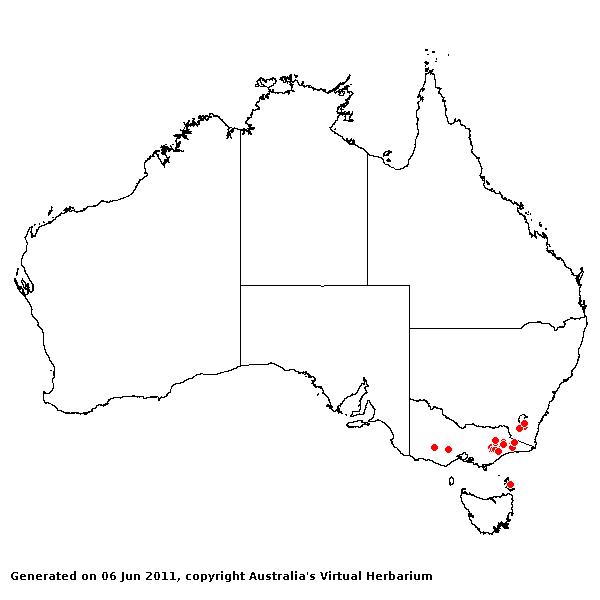Rytidosperma oreophilum H.P. Linder &
N.G. Walsh. Muelleria 8: 283 (1995).
Classification. (GPWG 2001) : Subfamily
Danthonioideae. Tribe Danthonieae.
Basionym and/or
Replacement Name: Rytidosperma
oreophilum H.P. Linder & N.G. Walsh, Muelleria 8(3): 283. 1995.
Type of Basionym or
Protologue Information: Australia: Australian Capitol Territory: slopes of
Mount Gingera, Bimberi Range, Pullen 3041 (HT: CANB; IT: A, BO, K, L,
MEL, NE, NSW).
Recent synonyms:
Austrodanthonia oreophila (H.P. Linder & Walsh) H.P. Linder.
Key references
(books and floras): [2002] D.Sharp & B.K.Simon, AusGrass, Grasses of
Australia, [2008] S.W.L.Jacobs, R.D.B.Walley & D.J.B.Wheeler, Grasses
of New South Wales (145).
Illustrations:
[2008] S.W.L.Jacobs, R.D.B.Whalley & D.J.B.Wheeler, Grasses of New South
Wales, 4th edn (145).
Derivation: Gk.
oros (mountain) and phileo (love). Mountain species.
Habit.
Perennial. Culms erect, 15–45 cm tall. Ligule a fringe of hairs.
Inflorescence.
Inflorescence solid, a panicle. Panicle ovate.
Spikelets.
Spikelets pedicelled. Fertile spikelets many flowered, with at least 2 fertile
florets (5–6), comprising 5–6 fertile floret(s) (?), with diminished florets at
the apex, laterally compressed, 12–17 mm long.
Glumes. Glumes
similar.
Florets.
Fertile lemma 2.4–3.7 mm long. Lemma surface indumented. Lemma apex lobed,
awned, 3 -awned. Median (principal) awn from a sinus, 7.5–10 mm long overall,
with a twisted column. Lateral lemma awns present. Lodicules present. Anthers
3. Grain 1.8–2.1 mm long.
Continental
Distribution: Australasia.
Australian
Distribution: New South Wales, Victoria.
New South Wales:
Southern Tablelands.
Notes. R.
oreophilum can be distinguished from R. erianthum by the setae much
shorter than the very long lemma lobes, setae which are included in the glumes,
often with scattered hairs on the backs of the lemmas; the setae are less than
3.5 mm long, compared to more than 3 mm for R. erianthum, and the awn
columns are less than 3.6 mm, compared to more than 3.3 mm for A. eriantha.
From R. tenuius it is distinct by the broad, obovate, hairy-backed
paleas, the shiny lemmas. There may be a superficial resemblance to R.
alpicolum, but the leaves are narrower, the paleas shorter, and the
rachilla internodes shorter.
Australian
alps between Canberra and Mt Buller, altitude 1300–1750 m, subalpine species,
in grassy clearings in subalpine woodland, or in subalpine grassland, often
associated with rocky outcrops; also in subalpine heath, sometimes in alpine
moors. Flowers Jan. or Feb.


